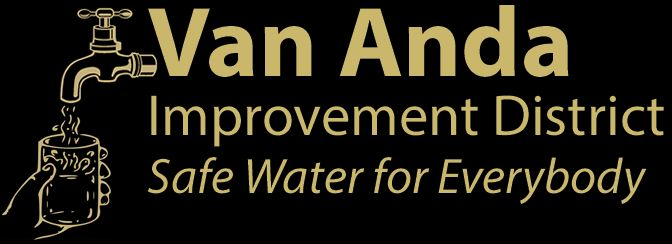Residential Waterline Installation
Standard Procedure
It is the responsibility of the homeowner or their contractor to install the water line from the District’s service connection to the residence. The owner is also responsible for understanding and abiding by VAID’s bylaws and Policies. The following District standards are to be followed during the installation:
Permission – The property owner must apply for and receive written permission from the Van Anda Improvement District (VAID) before waterline installation.
Construction – Water service line shall be:
- Constructed of the following materials that meeting AWWA standards
- Municipal grade 160 psi potable poly service water tubing (HDPE)
- Compression fittings rated for 200 psi.
- Buried a minimum of 1 metre (3ft) in depth, and at least 610 mm (2ft) away from any other service.
- Protected (sleeved) where it passes through foundations and/or footings.
- Connected directly to the service valve with a straight run to the building, with no couplings (unless specifically permitted by water operator).
- Provided with an accessible shut-off valve located as close as possible to where the water service pipe enters the building.
- Supported so sagging and misalignment cannot occur, with bedding solid and firm along entire length of pipe.
- After inspection, buried with backfill material that shall not contain rocks, boulders, organic soils, frozen material, rubble, or debris.
Materials – The piping material, joints, and fittings must be approved for use in potable water applications, CSA approved as listed on the Permitted Potable Water Pipe Applications, Underground – Outside Building, as found in the National Plumbing Code of Canada’s latest revision.
Inspection – All waterline installations must be inspected by a VAID water operator. Lines must not be concealed, covered, or put into use at time of the inspection. If internal dwelling isolation valve is not already installed, a hose bib/ball valve must be affixed to the end of the service pipe to allow for attachment of a pressure gauge. The District operator will open the main service valve and pressure test the line, while performing a visual inspection to confirm there are no leaks/pressure loss.
Number of connections – Only one single family residence is to be supplied with water for each legal lot, unless under specific circumstances where prior approval from the District must be obtained.
Maintenance – The property owner shall be responsible for all service pipes and plumbing systems from the outlet of the District’s curb stop or standard waterworks valve at their property line including: safekeeping, maintenance, and repair; protection from frost or other damage; prompt repair of frozen, leaky, or imperfect pipes or fixtures; and all water used on their property.
Shut off valve – It is an offence, under the Safe Drinking Water Act and District Bylaw for anyone other than the District’s representative to operate the shut off valve.
